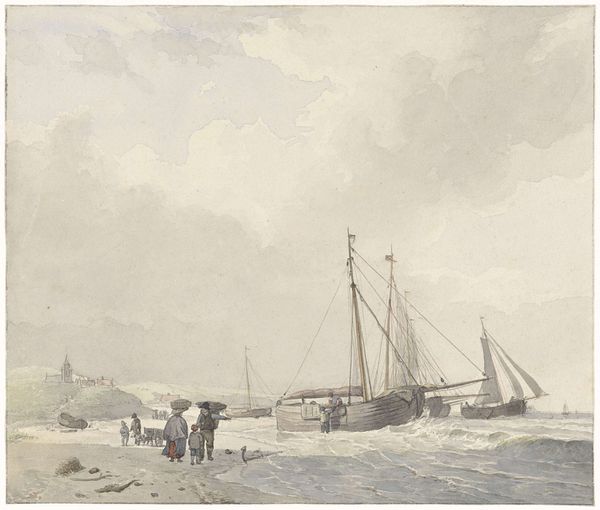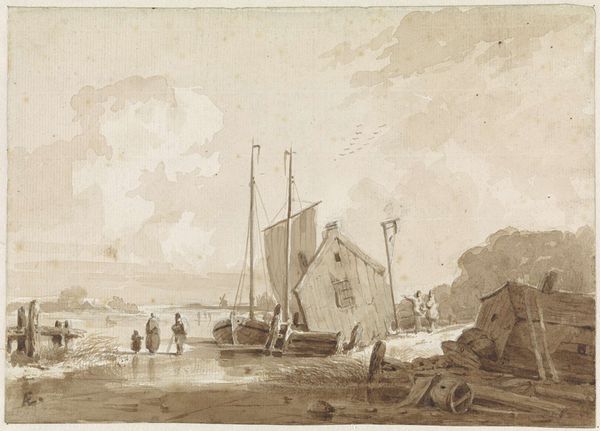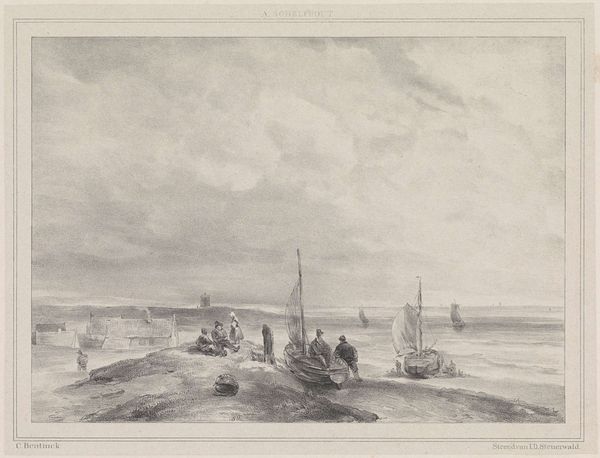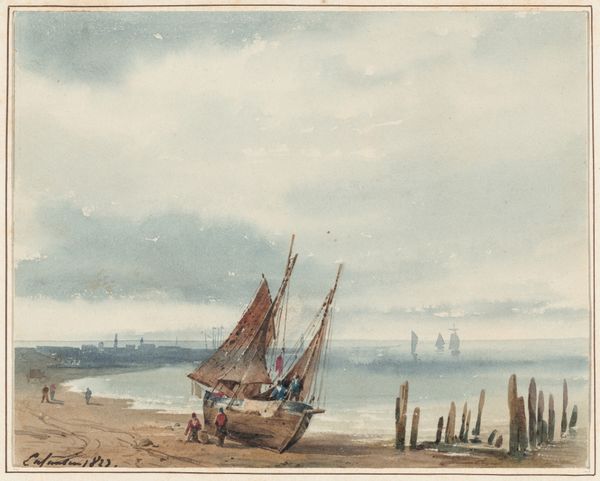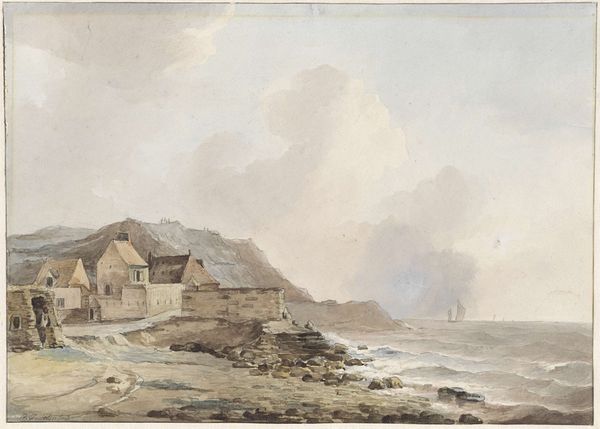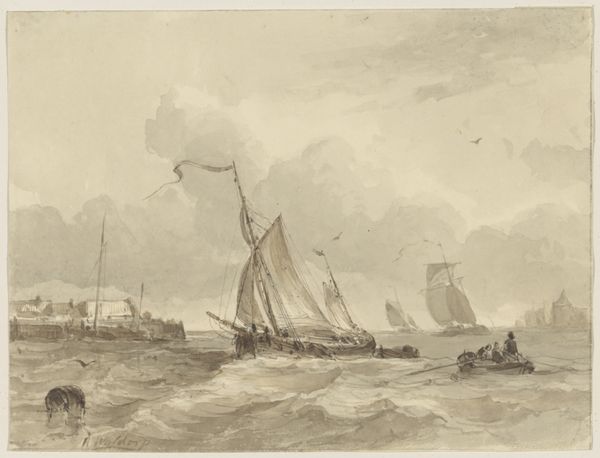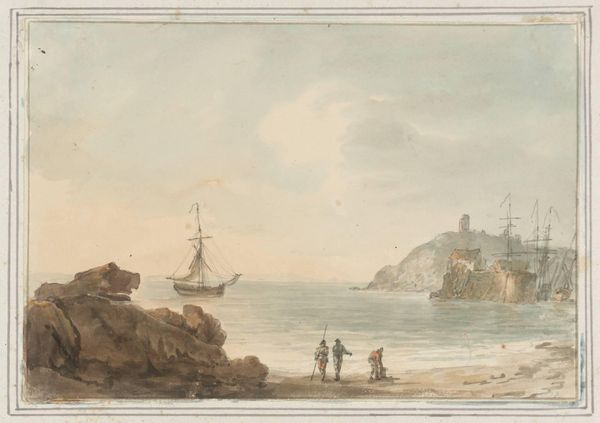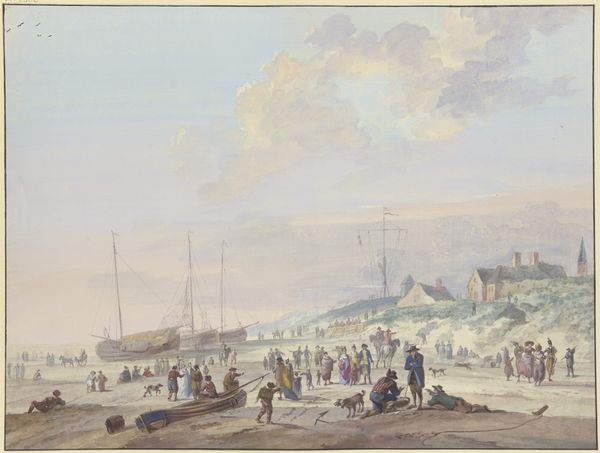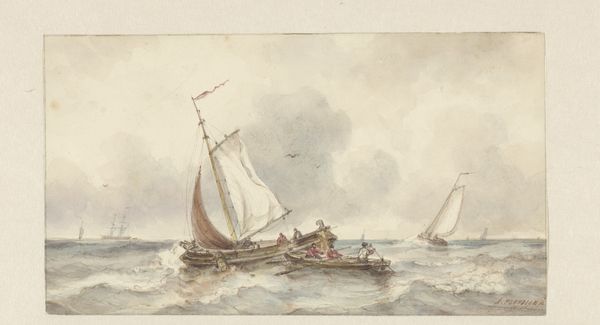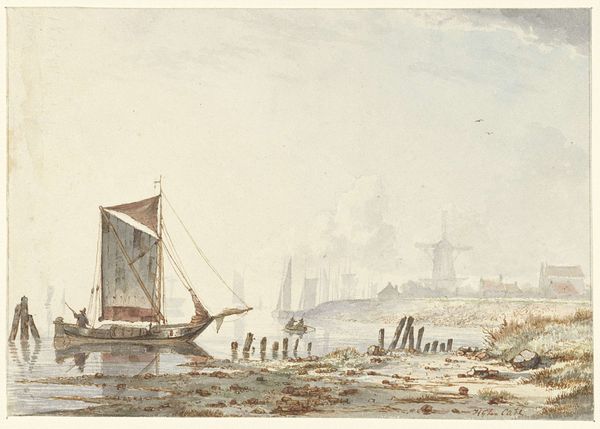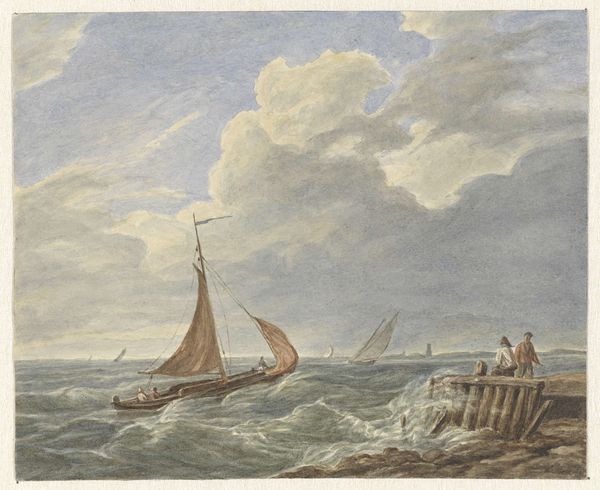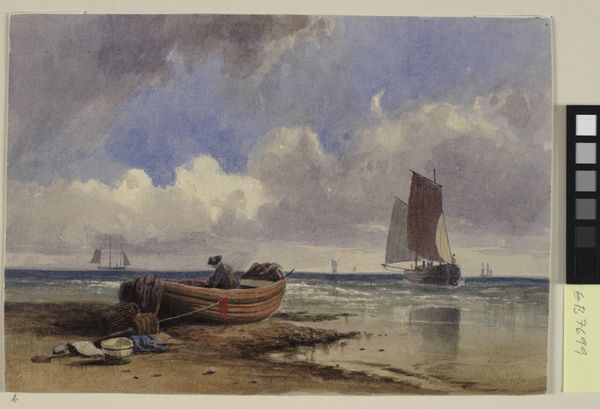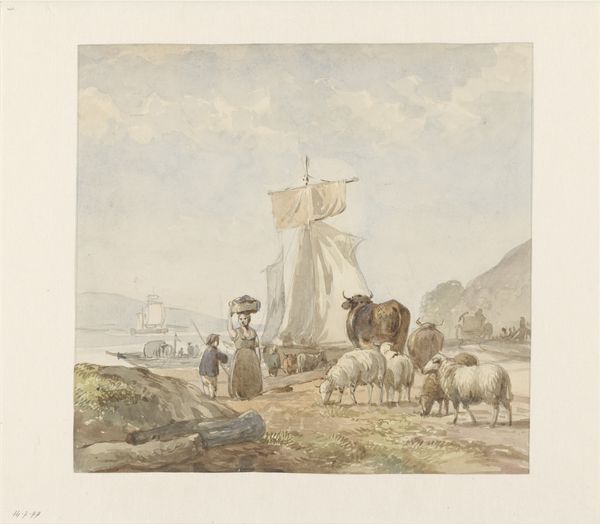
drawing, plein-air, watercolor
#
drawing
#
boat
#
plein-air
#
landscape
#
figuration
#
watercolor
#
coloured pencil
#
romanticism
#
cityscape
#
watercolor
Dimensions: sheet: 5 1/2 x 8 15/16 in. (13.9 x 22.7 cm)
Copyright: Public Domain
Curator: This is "Figures on a Beach, Northern France," a watercolor and graphite drawing completed around 1830 by the English artist Thomas Shotter Boys, now residing at the Metropolitan Museum. Editor: It's captivating, immediately evoking a sense of a community connected by the sea, although the overcast sky adds a touch of melancholy. The figures seem small against the landscape, their presence almost transient. Curator: Precisely. Boys was known for his skill in capturing the atmosphere and architecture of both French and English cities and coasts, at a time when the public's appetite for picturesque views was growing rapidly, fueled by new printing technologies that facilitated the mass distribution of such images. This work demonstrates the interest in Northern France, which became easier to visit after the end of the Napoleonic Wars. Editor: The symbolism is fascinating; boats have always represented journeys, transitions, and the unknown. Here, with people gathered near them, one gets a sense of expectation and possibility. The presence of the lone rider perhaps signifies an impending departure. Curator: And it reflects the changing social landscape too. Coastal towns in northern France were experiencing increased commercial activity. Works such as these romanticized but also helped document that transformation, fostering a sense of shared national identity in both France and Britain. It gave form to an idealized sense of the ordinary, a moment away from the emerging industrial centers. Editor: I’m struck by the color choices; the muted palette makes everything appear timeless, as if pulled from a half-forgotten memory. There's something quietly dramatic about the interplay of light and shadow around those ominous clouds. It stirs something primal about humankind against the natural world. Curator: The artist’s technique reflects a deep understanding of perspective. His plein-air approach creates a real-world context, grounding the somewhat theatrical Romantic tone that you pinpoint, suggesting perhaps the broader cultural shifts. As he presented it, this view of the landscape itself had a cultural agenda. Editor: That’s a beautiful thought. I walk away pondering our perpetual relationship with the sea and how it forever links us to places beyond our immediate horizon. Curator: A fitting reflection on the enduring ability of art to reflect our relationship with nature, progress, and each other.
Comments
No comments
Be the first to comment and join the conversation on the ultimate creative platform.
